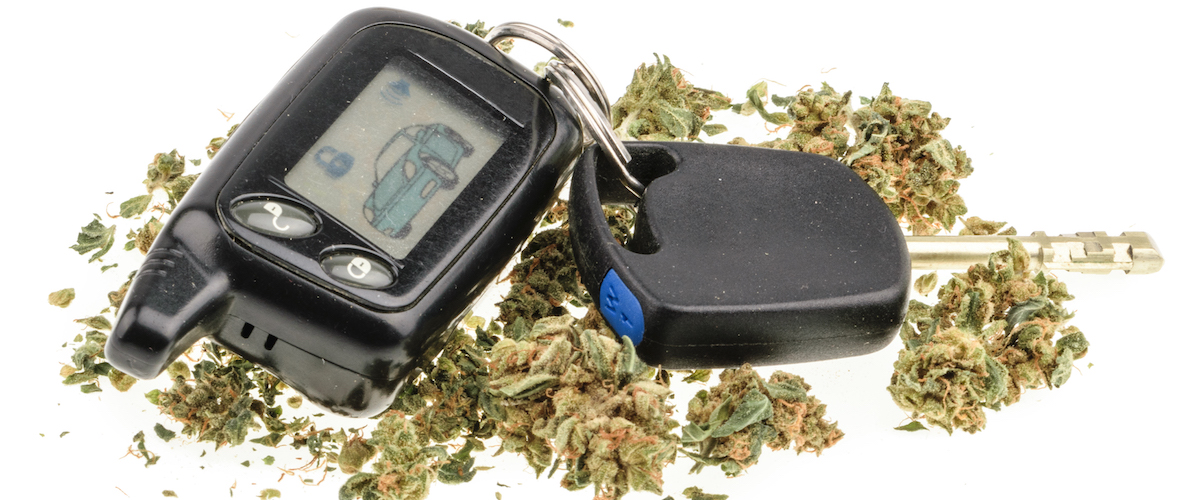As experts anticipated, research now confirms that legalizing marijuana for recreational use leads to an increase in arrests for impaired driving, although the methods for determining impairment still lack teeth.
A Canadian study published this week in the New England Journal of Medicine revealed that after legalization, the number of people in one province found behind the wheel with levels of THC — the intoxicating ingredient in marijuana — above the legal limit more than doubled. A similar uptick in impaired motor vehicle crashes has been registered in states legalizing marijuana as well.
The announcement wasn’t news to Dr. Godfrey Pearlson, medical director of the Olin Neuropsychiatry Research Center at the Institute of Living, part of the Hartford HealthCare Behavioral Health Network.
“It’s unsurprising that, as any recreational drug becomes more available and consequently more people use it, you’re going to see more adverse consequences related to the substance,” said Dr. Pearlson, an internationally recognized researcher in the field of marijuana use. “As an example in the opposite direction, rates of cirrhosis of the liver went down significantly during Prohibition, because fewer people were using alcohol, and went right back up again when Prohibition ended.
“More people using marijuana automatically equates to more cannabis-intoxicated drivers.”
The challenge, as Dr. Pearlson predicted before Connecticut legalized marijuana for recreational use last year, is monitoring use and gauging impairment. Unlike alcohol impairment, which can be measured through a blood test and by law enforcement at the roadside with a Breathalyzer machine, he noted there is currently no effective way to measure impairment from THC. A lab test can show the level of THC in a person’s blood, but impairment is not directly correlated to THC levels.
“If the trend continues, we will likely see more accidents involving cannabis-impaired drivers, but more worrisome is individuals who are dually impaired on alcohol plus cannabis,” he said.
In his Olin research lab, Dr. Pearlson and colleague Dr. Michael Stevens have been working to develop a roadside tool that, like the Breathalyzer, could be used to test drivers for THC impairment. They recently presented initial data to the National Highway Traffic Safety Administration.
“They were sufficiently impressed to fund us to replicate the most promising elements of our roadside test battery in a new population. If this next step is successful, they will likely proceed to a national trial of our methods,” Dr. Pearlson said.
The Olin researchers are completing tests of a recent experimental device that claims to be able to detect individuals who have smoked cannabis within the previous few hours. A tablet computer would be used to conduct a series of neurocognitive tests at the roadside. In addition, by strapping a device with an accelerometer to the person, posture instability can be measured, providing a solid prediction of impairment, Dr. Pearlson said.
One challenge with tracking impairment by marijuana, Dr. Pearlson noted, is the variation in THC levels from one form of the substance to another. Marijuana comes as a dried herb for inhaling and vaping, but also as edibles, tinctures and concentrates.
“There is no standard ‘marijuana unit’ that corresponds to the standard alcohol unit or drink, so there are no approximate guidelines for safe use,” Dr. Pearlson said. “And the effects of smoked marijuana on driving last for at least four hours, although even that is a very rough guideline.”
Legal limits of THC while driving range from state to state. In Connecticut, there is no legal limit. THC levels peak quickly after using cannabis, then drop to less than 2 nanograms per milliliter of blood after about four hours. It takes about eight hours for levels to drop after having an edible.
“Stoned driving,” Dr. Pearlson said, is as dangerous, if currently less deadly, than drunk driving. Many people don’t understand that, and have a false sense that driving while intoxicated on cannabis is safe, which is untrue.
“The odds of being involved in a motor vehicle crash when driving ‘stoned’ are approximately double those of sober driving, but significantly less than the 10 to 15 times increase when driving with a blood alcohol concentration of approximately 0.1,” Dr. Pearlson said.
Either form of intoxication, however, is discouraged, according to Dr. Jonathan Gates, chief of trauma at Hartford Hospital and head of the system’s Not One More initiative which asks drivers to pledge that they will not drive impaired.
“In order for us to see ‘Not One More’ injury or death related to impaired driving, we ask Connecticut drivers to pledge that they won’t have that one additional drink or smoke that puts them and others at risk,” Dr. Gates said.
He noted that, during the pandemic, fatally injured and non-fatally injured drivers “have demonstrated significantly higher overall drug prevalence.” In fact, he said, the incidence of injured or killed drivers on the roads who tested positive for two or more drugs increased from 17.6 percent pre-pandemic to 25.3 percent during the first waves of the pandemic in the United States.”
“The confluence of the legalization of marijuana, the increased stressors of the pandemic and the increase in motor vehicle crashes leading to fatalities in impaired drivers is increasing,” Dr. Gates said. “Now is the time to speak out in favor of ‘Not One More’ drink or drug so that we, as caregivers, do not have one more injury or fatality from impaired driving in our hospitals across the state.”



